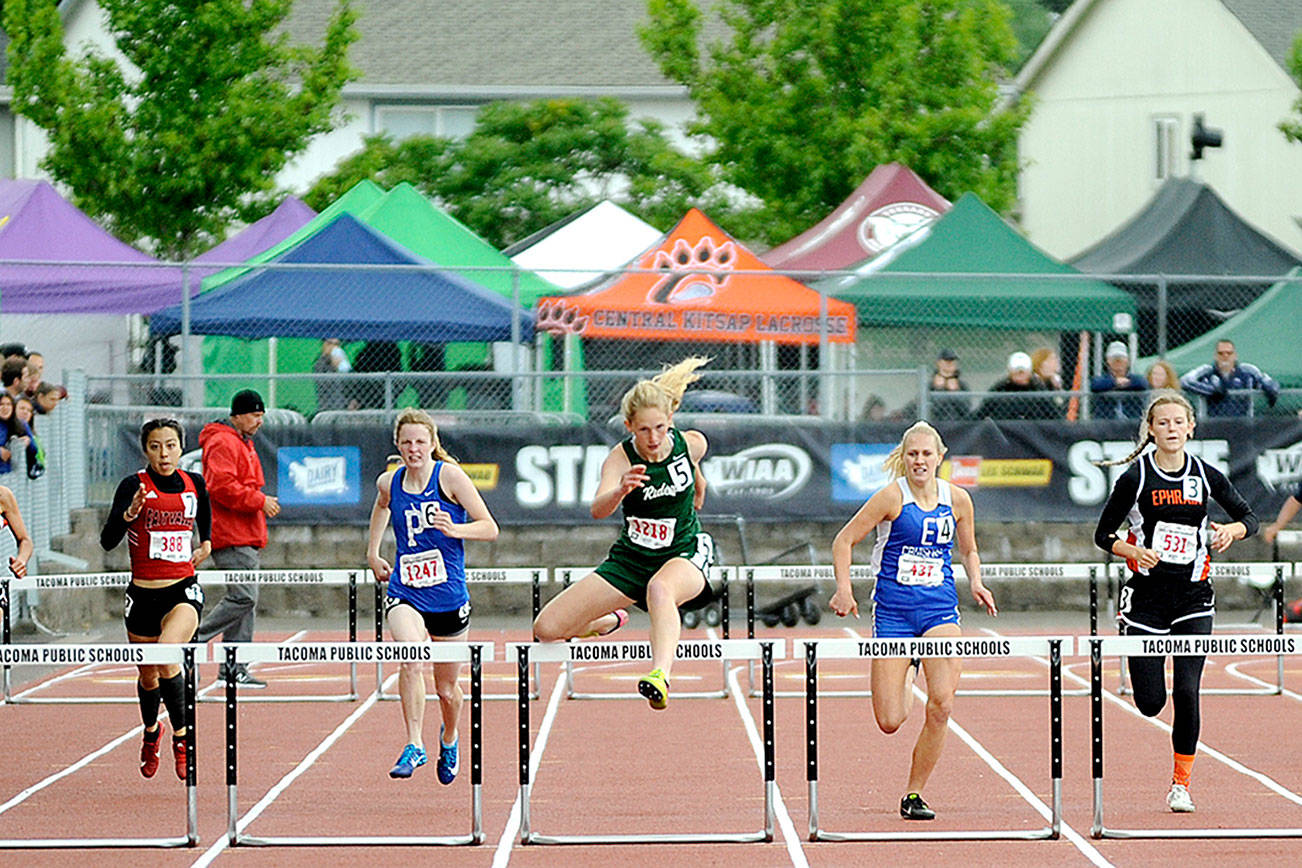PORT ANGELES — Potential guidelines exist for whenever prep sports returns to the training grounds here on the North Olympic Peninsula.
With some states already allowing prep athletes to resume school-supervised training regimens, the National Federation of State High School Associations (NFHS), the group that oversees high school sports and coordinates rulemaking at a national level, released some instructions earlier this week for opening up high school athletics and activities.
The full document is available online.
A three-phase plan has been endorsed by NFHS’ Sports Medicine Advisory Committee as the most effective manner in which to bring sports and activities back into the lives of students and eventually family, friends and other fans.
The NFHS Sports Medicine Advisory Committee endorses a three-phase plan as the most effective way to integrate sports back into student life. The federation also broke down sports and activities into low-risk, moderate risk and high-risk categories.
Some highlights from each phase of the NFHS plan:
Phase I
• Athletes and coaches are to be screened before each workout, including temperature check.
• There should be no gatherings of 10 or more people, inside or outside.
• There should be no locker room usage.
• Workouts should consist of the same group of five to 10 students — with proper social-distancing of at least 6 feet between all athletes and coaches.
• Students should be encouraged to go directly home after a workout and wash their clothes and gear.
• There should be no shared athletic equipment or apparel among students, including towels and water bottles.
• There should be no sharing of a single ball (basketball, football, soccer ball, volleyball, baseball, softball) among players in a team workout or drill.
• No water-drinking stations will be utilized.
Phase II
Keep Phase I recommendations in mind, with these amendments:
• There should be no gatherings of 10 or more people inside, but it increases to a maximum of 50 outdoors.
• Minimal usage of locker rooms allowed, keeping in mind 6 feet of social distancing between athletes and coaches.
• Lower-risk sports such as individual running events, throwing events, individual swimming events, golf, weightlifting, alpine skiing, sideline cheerleading, single sculling and cross country can resume full practices and competitions.
• Modified practices for moderate-risk sports such as basketball, volleyball, baseball, softball, soccer, water polo, gymnastics, ice hockey, field hockey, tennis, swimming relays, pole vault, high jump, long jump, girls lacrosse, crew with two or more rowers and 7-v-7 football will be allowed.
Phase III
Keep previous recommendations in mind, with these amendments:
• No more daily screenings with temperature checks. Any person with a fever or cold symptoms in the past 24 hours should not practice and instead seek doctor’s care.
• Gatherings of up to 50 athletes and coaches are allowed, indoors and outdoors.
• Social distancing is reduced to a range of 3 to 6 feet.
• Moderate-risk sports can hold full practices and competitions.
• Modified practices for high-risk sports such as wrestling, football, boys lacrosse and competitive cheer and dance will be allowed.
Who can attend?
The NFHS also broke down who would be allowed to attend competitions into three separate tiers.
Tier 1 includes essential people, identified as athletes, coaches, officials, event staff, medical staff and security.
Tier 2, the preferred people, are media members.
Tier 3, the non-essential people, are fans and vendors.
The three-phase plan looks similar in many ways to Phases 2-4 of our state’s plan to reopen businesses and activities, with Phase 2 looking likely to go into effect June 1.
Washington’s Phase 3 would see the return of team sports like baseball with no crowds and Phase 4 would include the resumption of gatherings of 50 or more people, including large sporting events. Clallam County health officer Dr. Allison Unthank said last week that a conservative estimate would see Clallam County reach Phase 4 by Sept. 1, just in time for fall prep sports.
Whether those fall sports would be able to be played, particularly football, under this guidance remains unclear.
And there has been significant conversations at the statewide level on potentially moving more of the lower-to-moderate risk sports, such as golf, baseball, softball and possibly track, from spring to fall.
________
Sports reporter Michael Carman can be contacted at 360-406-0674 or mcarman@peninsuladailynews.com.



